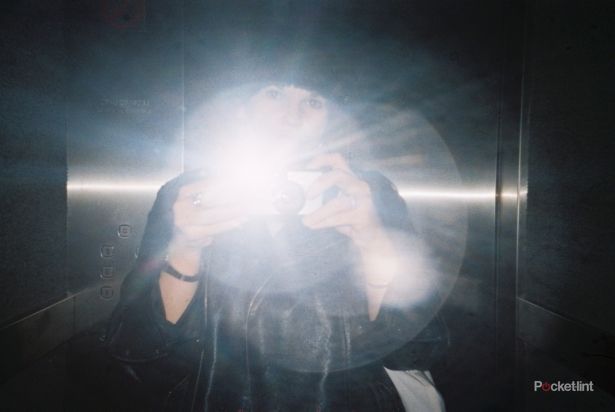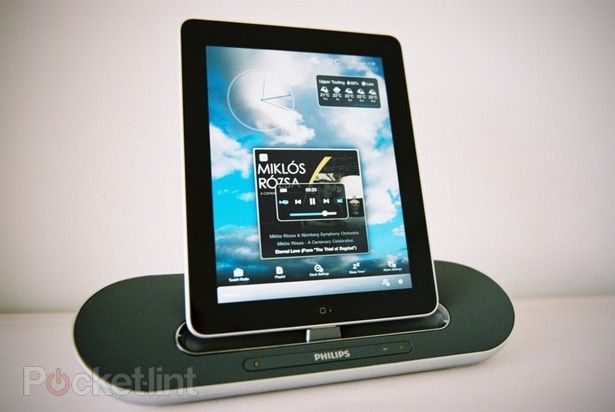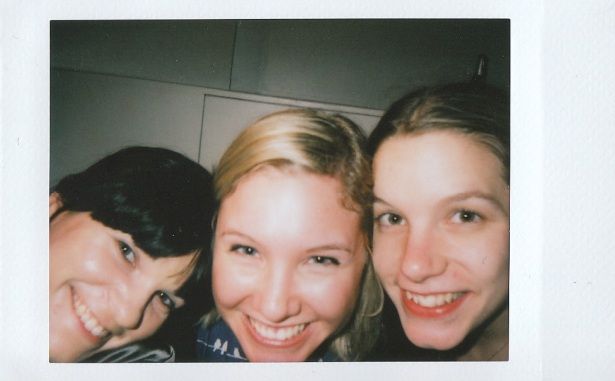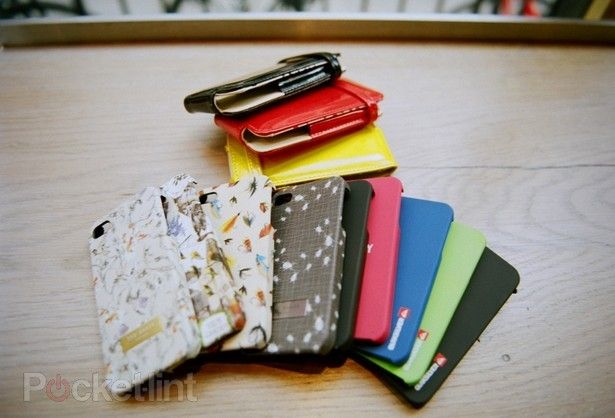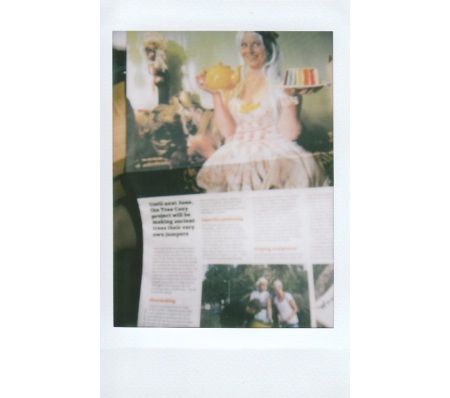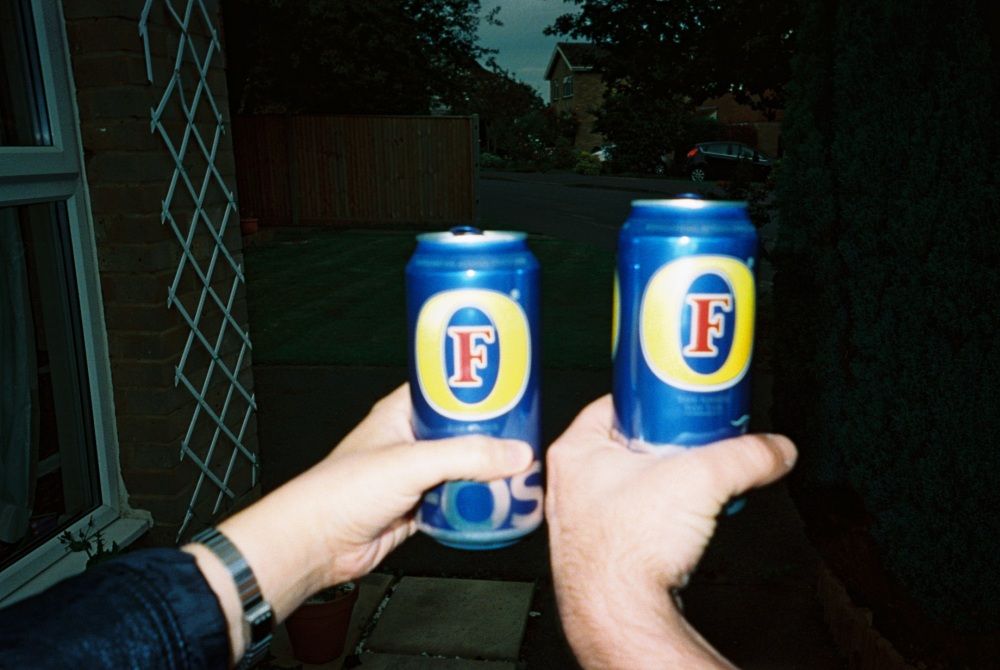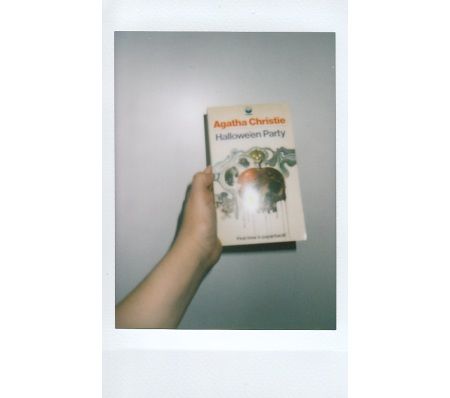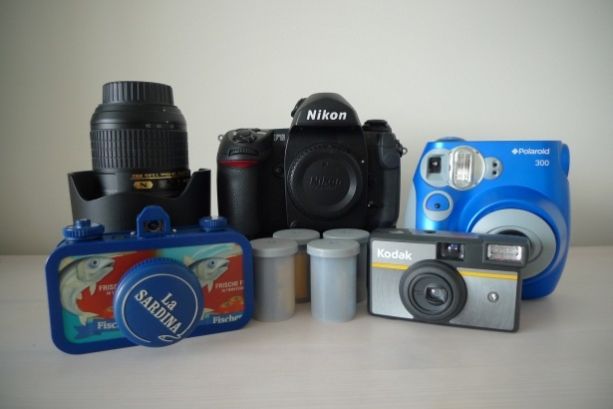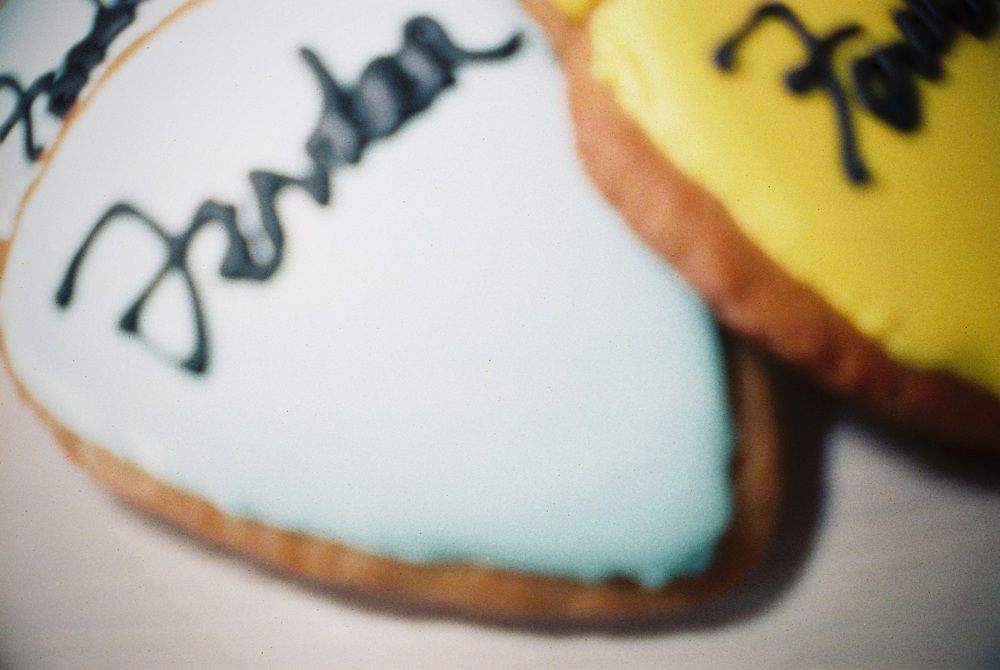Almost everyone on Team Pocket-lint is a camera nut of some description but out of all of us with our various bits of high tech snapping kit, I've also got quite a strong collection of Lomo cameras. The question is though, is film still relevant beyond retro style photography? Does it still have a place in society and how much of a pain in the bum is to use now that we're mollycoddled by the happy snapping ways of digital? I decided to find out in 7 days.
The challenge here was to go for an entire week without using any digital cameras whatsoever, including the one on my iPhone. My day-to-day camera, which was housed safely on my bookcase for the entire 7 days, is a Panasonic DMC-LX3 - the brand's top-of-the-range compact from a couple of years ago which is nice and portable while also offering excellent picture quality, largely thanks to its fancy Leica lens. I also use a lot of film cameras, but they're all lo-fi models (mostly Lomo) so the first step was to track down a decent film snapper to use for all the Pocket-lint reviews and hands-on work that I do. As it turns out, not an easy task.
After a lot of back and fourth with various brands, Nikon agreed to lend me an alarmingly expensive F6 SLR (around £1,500) for the duration, along with a rather large AF-S NIKKOR 24-70mm zoom lens worth something like the same again. I was also sent a Kodak Ultra Compact single-use camera, along with some film, while Polaroid loaned me one of its Polaroid 300 instant cameras. The film-based lineup was completed by my Lomography La Sardina.
Obviously, this isn't a review of any of the cameras involved - it's an account of life without a digital camera. My 7 days begins on Thursday - simply because the Nikon camera turned up at my door halfway through the week. Read on to find out what happened.
Thursday
Thanks to a week of very late nights staying up to follow the London riots on Sky News and Twitter (and praying that they wouldn't come any closer to my home or those of my friends), the tail-end of the week was something of a struggle. On the agenda for Thursday was a review of the Philips Fidelio DS7700 iPad dock. Usually I would breeze through my review shots on my digital camera, checking them on the screen as I go, before transferring them to my computer and resizing them - all within about half an hour of setting up the kit. Not this time.
Naturally, all of the pictures needed to be snapped using the Nikon F6 and things took a bit longer when film was brought into the equation. After finally managing to load up a Kodak Gold ISO 200 colour film after several failed attempts and a substantial amount of swearing, I was finally ready to get stuck in. The F6 is a heavy camera at the best of times and even more so when you're trying to balance an iPad dock in one hand and use the camera one-handed.
I'm not really a SLR aficionado, so I was at the mercy of the hastily Googled manual when it came to setting the camera's controls. The fact that I couldn't take a couple of test shots and look at them to check that the settings were correct before I got started was a major hassle. Having to finish the film off was also something of a pain. Using a well-practiced review routine, I can usually get the 10-15 shots that I need by taking around 20-25 of them on my digital camera. As this iPad dock was a relatively simple piece of kit with only a couple of buttons, there were only a certain amount of shots that I needed, but I had to keep going after that to finish off the film - taking up precious time and also making by arm ache from holding the F6.
Once finished, instead of just popping an SD card into my computer, I had to make the 10-minute saunter down to the local Boots to put my film in for one-hour processing, at a cost of £7.49 (I initially went into the nearby Snappy Snaps, who said that they'd be able to take care of my photos in an hour, but then backtracked when I presented them with a film and said that it would take three). Then I went back home for lunch before returning to pickup my disc of images, all the time praying that they were ok so that I wouldn't have to repeat the entire process.
Thankfully, the pictures were mostly usable, although the review lacks a close-up shot of the Bluetooth and volume controls as none of my shots of these were sharp enough and I didn't think that it was worth the cost of another film and more processing to put right this tiny detail (not to mention the time involved).
After work, I moseyed on down to the Lomography store in Soho for a largely beer-based "tea party" to celebrate the new B&W Earl Grey & Lady Grey films. Being without a digital camera in the Lomo store is hardly unusual so I didn't miss not being able to use one, and I took along the La Sardina and a Polaroid 300. I took a few shots, including this Poloroid snap (above) of myself, and fellow journos and Lomo users Kat and Laura.
Friday
The last day of the working week involved a morning of catching up on emails and wrangling couriers and review kit, including an argument with an pointedly pedantic courier about which London borough my home is located in (it seemed somewhat irrelevant, as he'd already managed to find his way to my doorstep). After such high-jinks I was happy to shoot off to Soho for lunch with accessory brand Proporta to check out the latest products at which I'd be expected to fire of some shots and then get them up onto the Pocket-lint pages as quickly as possible.
The key here was planning. Not only did I have to find a bag sturdy enough to take my laptop, the heavyweight camera and the terrifyingly expensive lens, along with all the other nonsense that a lady carries around on a daily basis, I also had to make sure that there was a film processing shop within walking distance of the event at the restaurant.
After a fantastic Mexican lunch, we went through a presentation of the products before getting our hands on the goods. Usually I would take some snaps of the kit at the table as we went along. However, the lighting wasn't great, and as I knew I wouldn't be able to simply take a test shot and check it on screen, I waited until the presentation was over before scooping up the products and taking them to a brighter table near the window in order to take my photos, while getting quite a few odd looks from fellow patrons.
After bidding farewell to the Proporta team I bowled down to the nearest Snappy Snaps, which I'd located on the map earlier (handily on the same road as the restaurant), to drop my film in before hunting down the nearest place with Wi-Fi, which just so happened to be a pub (I love it when a plan comes together).
Fast forward one hour and I left a couple of journo friends in the boozer, guarding my computer and camera equipment while I legged it back to the nearby shop to pick up my disc (costing a rather steep £10.99). After checking the results, I was a little concerned that the pictures looked a tad soft and that they wouldn't be good enough to use. After checking with our learned news editor, who said they'd be fine with a couple of crops here and there, I posted the story - a good couple of hours after we'd first seen the products. With a digital camera, I would've been able to do this in less than half the time.
Saturday
After a much-needed lie-in and catching up on David Starkey's now infamous appearance on Newsnight via the medium of iPlayer, I picked up the papers to find someone I know on the front page of The Guardian with an in-depth feature in the travel section. In normal circumstances, I would've taken a snap of the article on my phone and "twitpicced" it to the person involved. Instead I had to settle for a Polaroid snap which, I reasoned, I could scan and send by email. As you can see from the picture below, it didn't really come out very well. Although the Polaroid 300 is fun to use, both the flash and viewfinder are very unpredictable, so it's not easy to get good results. In the end, I settled for a tweet, without a picture.
The afternoon was spent at my uncle's house largely drinking tea, catching up on family gossip and watching a couple of young family members (and a couple of not-so-young ones) playing Star Wars Lego on a PS2, followed by Despicable Me on Blu-ray. I didn't take any pictures of the younglings, because my Facebook-phobic cousin is not a fan of putting family snaps up on the web.
Travelling back to my cousin's house in a two-car convoy, there was something of a logistical error that left myself and a cousin waiting on the doorstep of his sister's house with nothing but a crate of beer and a throwaway camera for entertainment. Predictably, we cracked open a couple of cans and took some pictures in order to kill time until the the others turned up with the keys or we got arrested for loitering with intent in their front garden. Thankfully, it was the former.
After an evening of beer and wine, we settled down for dinner before my cousin attempted to "Fool Us" with a trick from the kids' magic set, leading to a lengthy discussion about Dynamo and Penn & Teller, and whether any of them use camera trickery (I've seen both acts live and can confirm that no camera-based tomfoolery was involved). Next up was a couple of unruly rounds of DVD-based boardgame Scene It. This is the kind of time when I might take a few snaps using my iPhone, or even make like an insufferable hipster and fire up the Hipstamatic iPhone app for some retro shots.
This week, of course, that wasn't going to be possible, so I took some shots with the throwaway Kodak camera. Drinking ensued. Most of the photos turned out ok, but I'm bound by the universal, unwritten rule of not publishing unflattering pictures of family and friends. If the photos had been digital, I would've checked them as we went along until we got a nice one. It's times like this that you really miss having a digital display and the ability to ditch bad pictures as you go.
Sunday
After making my way back from my cousin's house in the wilds of Kent, I stopped off to buy some food before returning to my South London lair. I didn't make it to bed until circa 3.45am that morning, so Sunday was never going to be anything other than decidedly low key and with a much-needed day to myself. I wasn't planning on doing much. Let alone take any photos. I watched Magnum Force. I drank some fizzy pop. I updated my Facebook status.
Monday
I was on features duty on Monday, with no work events to go to, meaning that I was chained to my desk for the majority of the day (not literally, you understand). With an evening of freelance graft planned, there weren't really any opportunities for photos later on in the day either. To be fair, I probably wouldn't have reason for taking any photos on such a Monday even if I were allowed to use a digital snapper. Riveting stuff.
Tuesday
Most of Tuesday was spent knocking a feature on iPad apps for musicians into shape, so again, not much chance for taking photos for work. During my lunch break, though, I went for a rummage round the local shops and happened upon a book that I've been trying to track down for ages. It's an old edition of Agatha Christie's Halloween Party that I borrowed from the library when I was younger which had, until last week, proved elusive.
Ideally, I would've taken a snap with my mobile phone and sent it to my mum to say "look - I found it!" and to advise her to scale down the search (lucky old mum). Obvisouly, I wasn't allowed to do that, so I took a Polaroid, scanned it and emailed it - quite a palaver considering that it wasn't exactly ground-breaking news that I was conveying. As with the previous Polaroid snap, the picture didn't come out too well either, but it just about did the trick.
Part of the afternoon was spent lining up an App of the Day for the following day, and I stupidly opted for a camera-based app that enables you to make your own Andy Wahol-style digital screenprint. I got as far as prepping the images, writing the intro and downloading the app before it occured to me that I wasn't actually allowed to test it due to the 7 Days rules. Instead, I simply tested the non-photo parts of the app which included images and videos about the artist and his techniques, while roping in a trusted friend and fellow journo to give the camera aspect of the app the once-over. Not ideal, but needs must when you're living by the rules of a 7 Days feature.
Wednesday
Wednesday was another desk-based day (unfortunately, it was rather a quiet week for press events) - I spent a fair amount of time writing up the first half of this feature, and researching another piece about how the iPad is changing the face of music. Once again, not many opportunities for photos. However, at lunchtime, I partook in a spot of baking, finishing off some guitar plectrum-shaped peanut butter biscuits that I'd started the previous evening (yes, really). On completing them, I would usually take lots of Hipstamatic photos, along with some conventional digital snaps on my LX-3 for a post on my baking blog. Instead, I took the photos using the Kodak throwaway camera and my Lomo La Sardina. Obviously it would have been preferable to use the Nikon F6 for this, but seeing as this involved the cost of an extra film and another round of processing, I decided to stick to finishing off the films that I'd already started.
I didn't have a chance to get the photos developed until the following Monday after I'd finished my 7 Days. I trudged down to Boots again on Monday morning only to be met by mild panic when the assistant said that she didn't know if they'd be able to process them as she wasn't sure if there was anyone in the lab. Thankfully, it turned out that there was someone who could deal with my snaps but apparently if I had taken them in over the weekend then there wouldn't have been. Phew.
I hadn't actually had the chance to completely finish the film in the throwaway camera, but as I was up against a deadline, I took it in for processing anyway, taking some shots along the way (including the snap of me looking like a maniac, taken in the building's mirrored lift) before sacrificing the last few untaken frames on the roll.
After tapping away on my laptop in the local Starbucks for an hour, while supping a frappuccino like some sort of new media ponce, I traced my steps back to Boots to pick up my discs (£14.98 for the pair) before walking home to check them out - a total of about an hour and a half, door to door. Although lots of my snaps came out well (sadly, the majority of these were taken before the 7 Days challenge started), my baking pictures were pretty poor, as you can see from the image below.
While the throwaway camera and lomo snapper are great at certain things - close-ups are not their strong point. I'd forgotten just how easy it is to take decent-looking close-up shots with the macro mode on my digital camera. Thankfully, being something of a pessimist, not to mention a fan of planning ahead, I had the foresight to take my usual digital snaps of my baked goods the following day, after the 7 Days challenge was up. Sneaky.
Conclusions
As someone who uses a lot of film photography already, I didn't think that 7 Days doing without any digital snappers would be too difficult. How wrong I was.
Taking photos at press events and for kit reviews is a relatively speedy process when using a digital camera (and one that's free, after the initial outlay for the camera and memory card), while using film not only includes the cost of the film itself, along with processing, it also takes up valuable time, not to mention the hassle of having to finish off any spare photos at the end - something you don't need to worry about when your images are stored on a memory card. The fact that I couldn't review my images as I went along was a also a major hurdle - not only was it somewhat stressful, but in a couple of cases, my pictures proved to be unusable.
I also found that photo shops aren't always that reliable, with one telling me that it would take three hours to develop my film (despite initally saying yes to one hour), and another being unclear as to whether there was even anybody in the lab to do the job. I haven't had to use any high street photo processing services for some years, and it certainly seems that, as demand has decreased, so too has their reliability for a fast turnaround. Taking my films into the Lomo store in central London (as I do on a regular basis), is much more of a slick process. I know a lot of the staff in the shop, so there's also a social aspect to it with all of the in-store Lomographers also happy to help with camera or film advice.
I also missed having the use of the camera on my iPhone, especially the Hipstamatic app which I use for the majority of the pictures on my baking blog. Being able to take a quick snap of something interesting or amusing and send it to someone or upload it straight to Facebook was also something that I missed, and although Polaroid instant snaps are great at times, they're no substitute for a 3G-connected smartphone camera and it's interesting to see how tied up with the idea of social networking that the arrival of digital photography has been.
If you're really going to shoot film as your main modus operandi, then the key is planning. Not only did I have to make sure that I had enough film on me, I also had to ensure that there was a camera shop offering a one-hour service within walking distance. Although the products that I shot with the film camera were obviously important to us and our readers, I would've been reluctant to risk using a film camera if we'd been dealing with a more high-profile launch such as a new iPhone. No one would've been very impressed with us if we published a hands-on news story on Apple's latest gadget hours after everyone else, especially if the photos were a bit ropey.
It was really just quite astounding not how much the world has moved on but how it doesn't seem that interested in what it's leaving behind. The infrastructure for film photography just isn't there any more, at least not in an easily accessible way. The fact that even the main manufactures only seem to sell one model of film camera, if any at all, really says it all.
Film photography is great fun and offers a certain degree of unpredictability and creativity that you don't necessarily get with digital cameras and, if there was a positive to take away from all this, then, yes, there is a pleasure in shooting film that we've lost in our instant result digital times. However, when it comes to working on a fast-paced news-based tech site, anything other than digital simply won't do, and if you really want that surprise of film back in your life, then you can always turn your off preview screen.

